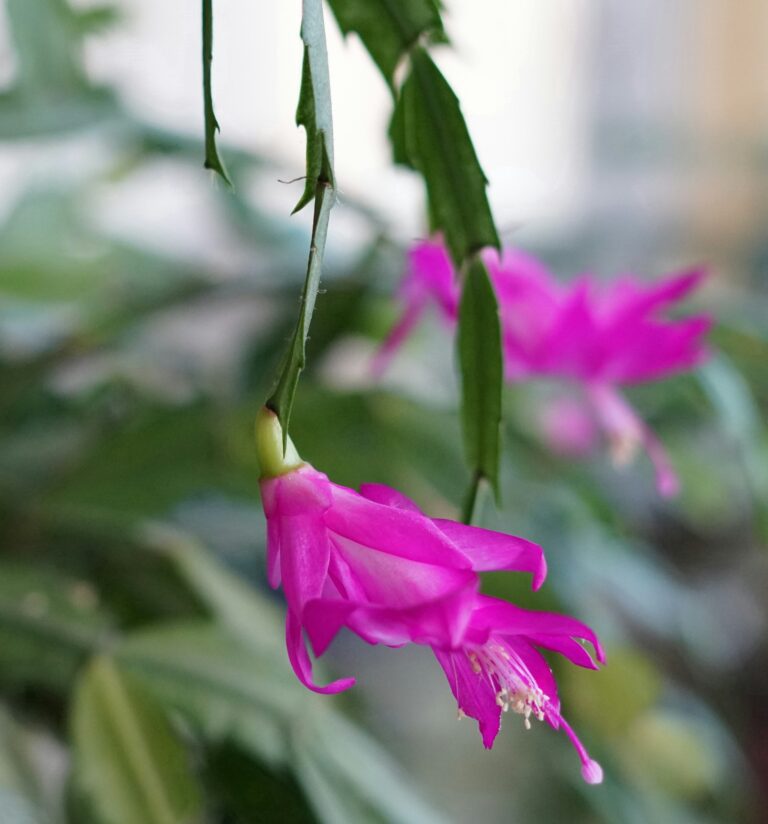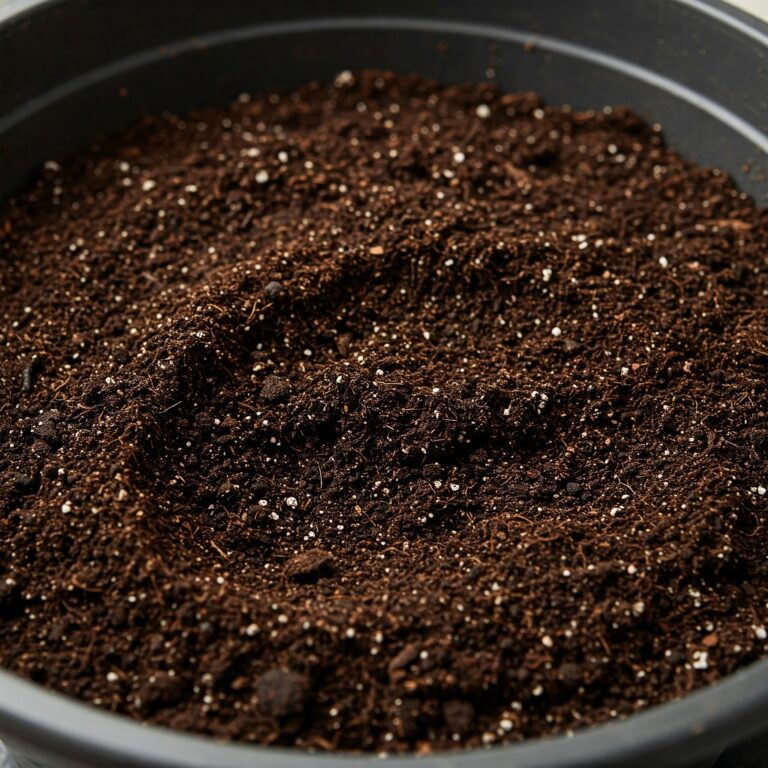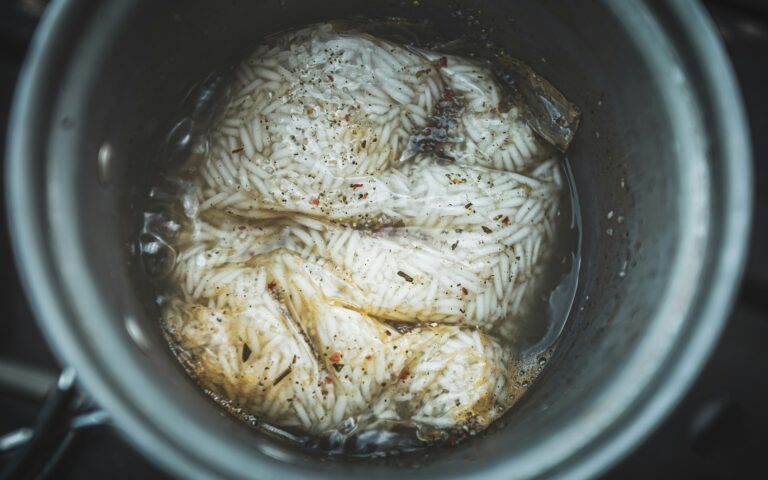Succulents are popular plants known for their fleshy leaves and ability to store water. One of the most exciting aspects of this plant is the ability to propagate succulents from leaves and stem cuttings.
This process allows you to create new plants from an existing one and expand your collection without buying new plants. Propagating succulents from leaves and stem cuttings is a fun and rewarding hobby that anyone can enjoy, regardless of your level of gardening experience.
To propagate succulents from leaves and stem cuttings, start by selecting a healthy plant and taking a cutting. For leaf propagation, gently remove a leaf from the plant and let it dry for a day or two. Once the cut end has formed a callus, place the leaf on top of the soil and mist it with water regularly.
For stem propagation, cut a stem from the plant and let it dry out for a day or two. Once the cut end has formed a callus, plant the stem in the soil and water it sparingly. With patience and care, your succulent cuttings will soon start to grow roots and new leaves, and before you know it, you’ll have a whole new plant to add to your collection.
What could be simpler than that? However, throughout the article, we have an in-depth explanation of how to propagate succulents from leaves and stem cuttings. Read more to find the full explanation.
What is succulent propagation?
Succulent propagation is the process of creating new plants from an existing succulent plant. This can be done through various methods such as seed germination, stem cuttings, leaf cuttings, division, grafting, or layering.
Propagation can be done both sexually and asexually, with sexual propagation involving the use of seeds and asexual propagation involving vegetative methods such as cuttings or division.
Propagation is common among gardeners, farmers, and horticulturists, as it allows them to produce more plants for food, ornamental, or commercial purposes. Successful propagation requires knowledge of plant biology and proper care and attention to environmental factors such as light, temperature, humidity, and soil quality.
If you are a beginner and have no idea how to propagate, then you are in the right place because you will learn what is required when propagating succulents from leaves and stem cuttings. Once you learn how to propagate, it will be a rewarding and enjoyable hobby.
So, how do you find the best leaves and stems to propagate?
How to find the best succulent leaves and stems to propagate
Sometimes, it can be hard to determine which leaf or stem is best suited for regrowing into a new plant. However, the only factor that will determine the success of the plant you choose is how healthy and mature it is. A healthy and mature leaf or stem can grow roots easily and quickly.
Select leaves or stems that are plump and firm, with no signs of damage or disease. Leaves that are too young or old may not be suitable for propagation, as they may not have enough stored energy to develop roots and new growth.
Also, ensure you choose leaves or stems suited for the specific propagation method you plan to use. For example, leaves that are too small may not be suitable for stem propagation, while leaves that are too thick or fleshy may not be suitable for leaf propagation.
Besides that, you can choose leaves or stems from plants that exhibit desirable traits, such as exciting colors or shapes, or plants that you particularly enjoy and want to propagate for personal enjoyment or to share with others.
After you find the best succulent leaves and stems to propagate, you can start the process of propagating.
How to propagate succulents from leaves
The best way to grow new succulents is through leaf propagation. Most succulents drop leaves naturally that grow beside your plant. The new plantlets are known as pups. The pups start to callous and then grow roots which find their way into the soil.
You can always leave pups to grow in the same pot as the mother plant; however, placing them in another pot is better to avoid overcrowding.
For those whose plants don’t drop leaves naturally, here are a few steps to propagate the succulents yourself. Here’s how:
- Choose a healthy, mature succulent plant and select a plump and firm leaf.
- Gently remove the leaf from the plant to avoid damaging the stem or other leaves. Use a sterilized, sharp knife to make a clean cut.
- Allow the leaf to dry out for 1-3 days until the cut ends form a callus. This will help prevent the leaf from rotting when it’s planted.
- Prepare a well-draining potting mix suitable for succulents, such as a mix of cactus soil, perlite, and sand.
- Place the leaf on top of the soil, with the cut end in contact with the soil. Be sure not to bury the leaf completely, as this can lead to rotting.
- Water the soil sparingly, just enough to moisten it without soaking it. Be careful not to get water on the leaf, which can also cause rotting.
- Place the pot in a warm, bright location with indirect sunlight.
- Mist the soil and leaf occasionally to keep them moist but not too wet.
- After a few weeks, tiny roots should start to develop from the base of the leaf, and a new rosette of leaves should begin to form.
- Once the new plant is well-established and has a few sets of leaves, it’s ready to be transplanted into its pot.
How to propagate succulents from stems
This type of propagation is suited for succulents with several stems or branches, such as sedum, jade, hawarthia, or aeoniums. These succulents usually have long stems because they tend to get leggy in search of sunlight.
When you cut the stem from the plant, ensure that you do it carefully to avoid infection since the succulent with roots will continue to grow florets from where it was cut, and the piece you cut will grow new roots.
Here are the steps to propagate succulents from stems.
- Choose a healthy, mature succulent plant and select a stem that is at least 4-6 inches long.
- Use a clean and sharp pair of scissors or garden shears to make a clean cut at a 45-degree angle just below a leaf node (the point where a leaf attaches to the stem).
- Allow the stem cutting to dry out for 1-3 days until the cut end has formed a callus. This will help prevent the stem from rotting when it’s planted.
- Prepare a well-draining potting mix suitable for succulents, such as a mix of cactus soil, perlite, and sand.
- Insert the stem cutting into the soil, ensuring the cut end is buried at least an inch deep.
- Water the soil lightly, enough to moisten it without soaking it.
- Place the pot in a warm, bright location with indirect sunlight.
- Mist the soil and stem occasionally to keep them moist but not too wet.
- After a few weeks, roots should start developing from the buried end of the stem cutting, and new leaves should grow from the leaf nodes.
- Once the new plant is well-established and has several sets of leaves, it can be transplanted into its pot.
How to care for propagated succulents.
Caring for propagated succulents is similar to caring for mature succulent plants. Here are some tips to help you keep your propagated succulents healthy and thriving:
- Watering: Succulents are known to store their water and can go without water for weeks, so ensure that you water them sparingly to avoid overwatering. Allow the soil to dry out completely between watering, and avoid getting water on the leaves or stem to prevent rot. When you water, thoroughly soak the soil to ensure the roots get enough moisture.
- Soil: Use a well-draining soil mix that is specifically designed for succulents. Avoid using regular potting soil, as it can hold too much water and cause the roots to rot.
- Light: Most succulents prefer bright, indirect sunlight. Place your succulents near a window with plenty of natural light, but avoid direct sunlight, as this can scorch the leaves.
- Temperature: Succulents generally tolerate a wide range of temperatures, but most prefer to be kept in a warm, dry environment. Avoid exposing succulents to extreme temperatures, such as near a drafty window or in a cold, damp room.
- Fertilizer: Succulents don’t require a lot of fertilizer, but you can boost them by fertilizing them once or twice a year with a diluted balanced fertilizer. Avoid over-fertilizing, as this can damage the plant.
- Pests and diseases: Look for common succulent pests, such as mealybugs and spider mites, and treat them promptly with insecticidal soap or a natural remedy. Also, remove dead leaves or plant debris to prevent harmful bacteria or fungi buildup.
Can you propagate succulents in water?
Yes. You can propagate succulents in water. Water acts as a medium just the same way as soil. The only difference is that you must be careful when propagating with water because it can damage your plant if not done correctly.
Here is how you can do it:
- Take a healthy leaf cutting from your succulent plant. Ensure the leaf is intact and has no signs of damage or disease.
- Fill a small jar or vase with enough water to cover the bottom inch of the stem.
- Place the leaf cutting in the water, ensuring the cut end is submerged.
- Place the jar or vase in a bright, warm location with indirect sunlight. Avoid direct sunlight, as this can cause the water to heat up and harm the plant.
- Change the water every few days to keep it fresh and prevent the growth of algae or bacteria.
- After a few weeks, you should start to see small roots forming at the base of the leaf-cutting. Once the roots are a few inches long, you can transplant the cutting into the soil.
Remember that not all types of succulents will propagate successfully in water. Some may rot or fail to develop roots, so it’s best to research the specific type of succulent you want to propagate before trying this method.
Also, remember that succulents propagated in water may have weaker roots than those propagated in soil, so you’ll need to be careful when transplanting them to avoid damaging the delicate roots.
Succulents that you can propagate in water include;
- Jade plant (Crassula ovata)
- String of pearls (Senecio rowleyanus)
- Christmas cactus (Schlumbergera truncata)
- Paddle plant (Kalanchoe thyrsiflora)
- Donkey’s tail (Sedum morganianum)
- Burro’s tail (Sedum burrito)
- Echeveria
- Graptopetalum
- Haworthia


